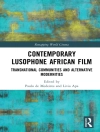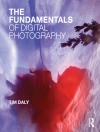This book offers a new way of thinking about film endings. Whereas existing works on the subject concentrate on narrative resolution, this book explores the way film endings blend together a complex of motifs, tropes and other elements to create the sense of an ending—that is, it looks at ‘endings as endings’. Drawing on a wide range of examples taken from films of different periods and national cinemas, the author identifies three key features which structure the work: thresholds and boundaries, water, and, above all, the beach. The beach combines water and a boundary and is the most resonant of the key sites to which film endings gravitate. Although beach endings go back to at least 1910, they have increased markedly in post-classical cinema, and can be found across all genres and in films from many different countries. As the leading example of the book’s argument, they illustrate both the aesthetic richness and the structural complexity of film endings.
Table des matières
Introduction.- THRESHOLDS AND BOUNDARIES.- Stations.- i. The station as stage.- ii. Lovers’ separations.- iii. World War 2.- Wartime homecoming.- iv. Stations and death.- WATER.- i. The waterside.- Ship and boat departure.- ii. On water.- iii. In and under water.- KEY ENDING TROPES AND MOTIFS.- i. Sunsets.- ii. Voice-overs.- iii. ‘Let’s go home’.- iv. Looking at or addressing the camera.- v. Emblematic shots.- vi. Theatricality.- BEACHES.- Introduction.- Early History.- i. Silent Cinema.- ii. The 1930s.- iii. World War 2.- Concepts and development.- i. The Woman on the Beach.- 1954 and after.- ii. Beach holidays.- iii. Tabula rasa.- iv. Empty beach.- v. Renewal.- Auteurist inflections.- i. La nouvelle vague and after.- ii. Beach auteurs: Fellini, Kurys, Ozon, Kitano.- Themes and motifs.- i. Death.- Dying.- Suicides.- ii. War.- iii. Hallucination, breakdown and insanity.- iv. The family and childhood.- v. Mourning and solitary reflection.- vi. Home movies.- vii. Fantasy.- viii. Apocalypse and post-apocalypse.- ix. Paradise and lost paradise.- x. Other categories and Conclusion.- Appendix: Films with beach endings.- Bibliography.
A propos de l’auteur
Michael Walker has written for Movie, Film Dope, CinéAction, Hitchcock Annual and Movie: A Journal of Film Criticism. He has contributed to The Movie Book of Film Noir (1992), The Movie Book of the Western (1996), Alfred Hitchcock: Centenary Essays (1999), Style & Meaning (2005), and A Companion to Steven Spielberg (2017). He is the author of Hitchcock’s Motifs (2005) and Modern Ghost Melodramas (2017).












